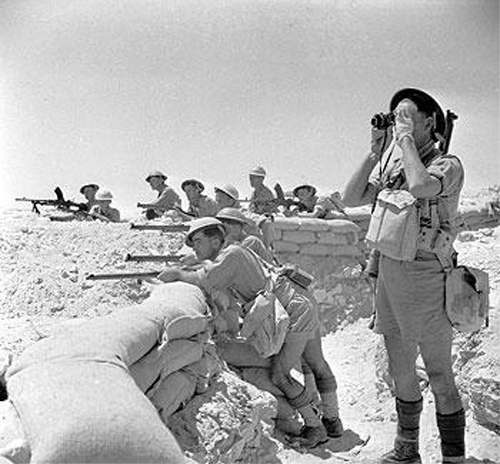El Alamein: The Battle that Turned the Tide of the Second World War
Review

El Alamein: The Battle that Turned the Tide of the Second World War, Bryn Hammond, Osprey Publishing, 2012, 328 pp, ISBN 978-1-84908-640-0, £18.99.
Bryn Hammond uses his scholarship and exhaustive research to make complex battles understandable. He has followed Cambrai 1917 with this very readable volume on the series of battles that we now call El Alamein. They were by no means the greatest of World War Two but for the British Commonwealth and Empire they did indeed mark the turning of the tide.
Working at the Imperial War Museums (IWM) Hammond has access to many unpublished memoires and he uses them to bring alive the feelings of the soldiers, often exhausted, hungry and thirsty, as they faced death or injury in battle. For much of the time the desert was the enemy and the hatred both sides developed for it is graphically told.
The author draws on his knowledge of World War One to show where new tactics were needed at Alamein and where old lessons had to be re-learnt, the latter certainly being the case for the artillery. For the engineers, new equipment was available to clear mines but the courage needed to move into a minefield, at night and under fire, was no different. The book does not hide the distrust between infantry and armour, a problem in North Africa since 1940, but it shows how this was overcome slowly by training and liaison.
Montgomery is the name always associated with El Alamein and the part played by his predecessor, General Auchinleck who commanded the defensive phase of the battle, is often forgotten. Hammond assesses the changes made to Eighth Army by "the Auk" which Montgomery built on, but failed to acknowledge. What he did most successfully was to convince the soldiers that Rommel could be beaten, although his oratory might have come to nothing if it had not been backed by an enormous influx of equipment during the break between the defensive and offensive phase of the battle. The book charts the rivalries between the various generals in Eighth Army and highlights the difficulties of coordinating a multi-national army in which commanders could appeal to their national governments if they disagreed with a decision.
The photographs, often from the IWM archive, complement the text very well. However the maps are a disappointment: they are very few in number, unlisted in the index, and with the key to the military symbols in very small print under the publisher's details. It might also have helped to put dates to each of the chapters. This lack of finishing does not detract from the quality of the text but points to a missed further opportunity.

